Published on ocula.com, 7 April, 2015

The space of White Cube in Hong Kong pulses with energy. Densely layered, vibrantly colourful works hang from the pristine walls on both floors. They are by one of Brazil’s best-known female artists, Beatriz Milhazes. For three decades the fifty-five-year-old artist has been seducing art lovers and collectors with her vivid, kaleidoscopic, festive paintings and collages. Now, after recently completing her first US museum show at the Perez Art Museum in Miami, the artist is showing in Hong Kong.
Milhazes’ work is sensual and unapologetically feminine, reappropriating and recontextualising the decorative and folksy, long derided in the art world and dismissed as low-brow. The surfaces of her collages and paintings burst with scatterings of flowers, but her arrangements aren’t polite or orderly, or decorative. What emerges from Milhazes work is a fecund and untamed tropical forest of trees and plants often layered atop each other. They hit you with their colour, shape, and dizzying configuration of patterns, a loud jungle of assorted papers and layered motifs vying for attention. In recent years the artist has moved to more geometric compositions, a return to the influences of Brazilian modernists like Tarsila do Amaral and Hélio Oiticica, and Op Art work of Bridget Riley. This adds yet another layer of movement and complexity to her pieces, figuration and abstraction brought into a harmonious, yet noisy, union.
The energy of her home city, Rio de Janeiro, is palpable in her joyous display of colour, calling to mind the city’s ‘carnaval’ with its throbbing music, elaborate head-dresses, and costumes. Dressed simply in a monochromatic ensemble and sporting a collection of bad-ass heavy gold rings on each finger, the pint sized and exuberant Milhazes takes us through her White Cube exhibition.
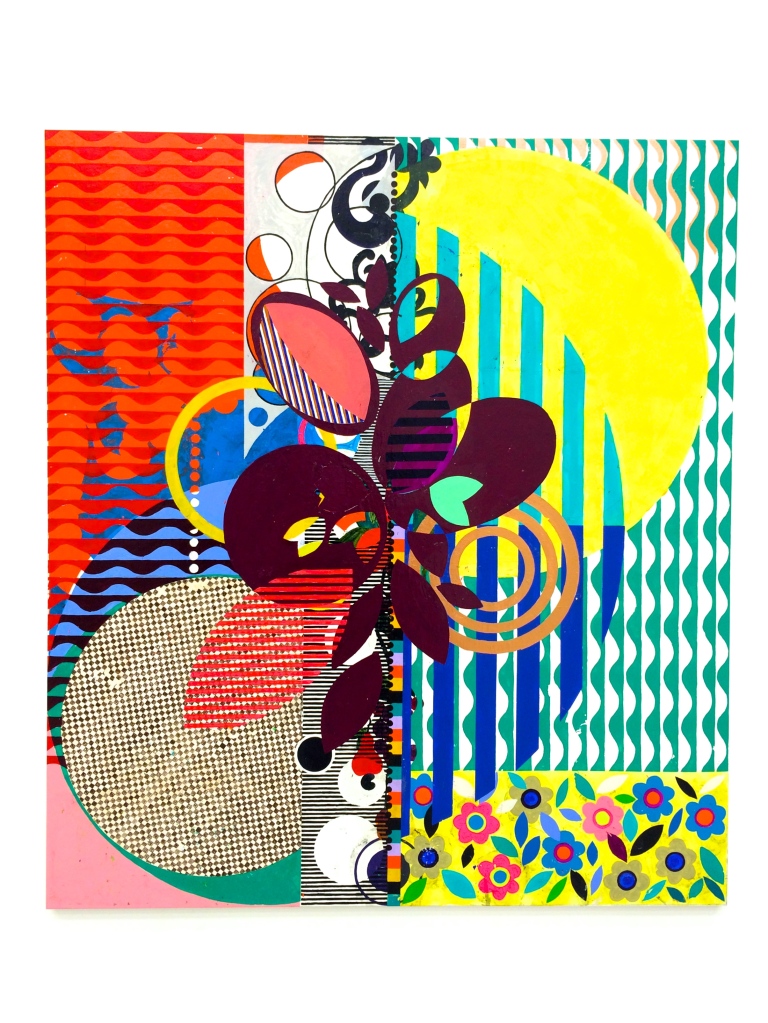
Your work process seems to be quite laborious and complex. Can you explain how you create your works? And how this working process came about?
Beatriz Milhazes: I only started making collages in 2003, but my technique for painting developed in 1989 and the process always had a connection with collage concepts. I would work with cutouts of paper and fabric on canvas… in 1989 I had a crisis of how to express myself … and I started researching different methods of painting using the monotype process, which drove me to this process of transferring onto canvas. I make a drawing on a clear plastic sheet and on the other side I paint a motif. Once the paint is dry I can peel off the images from the plastic and glue them onto the canvas and layer them—there is a connection with the collage process. I developed my own motif, drawings, and elements.
The difference with monotype and my technique is that monotype works with wet paint, and this works with dry paint. Sometimes bits of paint flake off and it looks a bit more rustic.
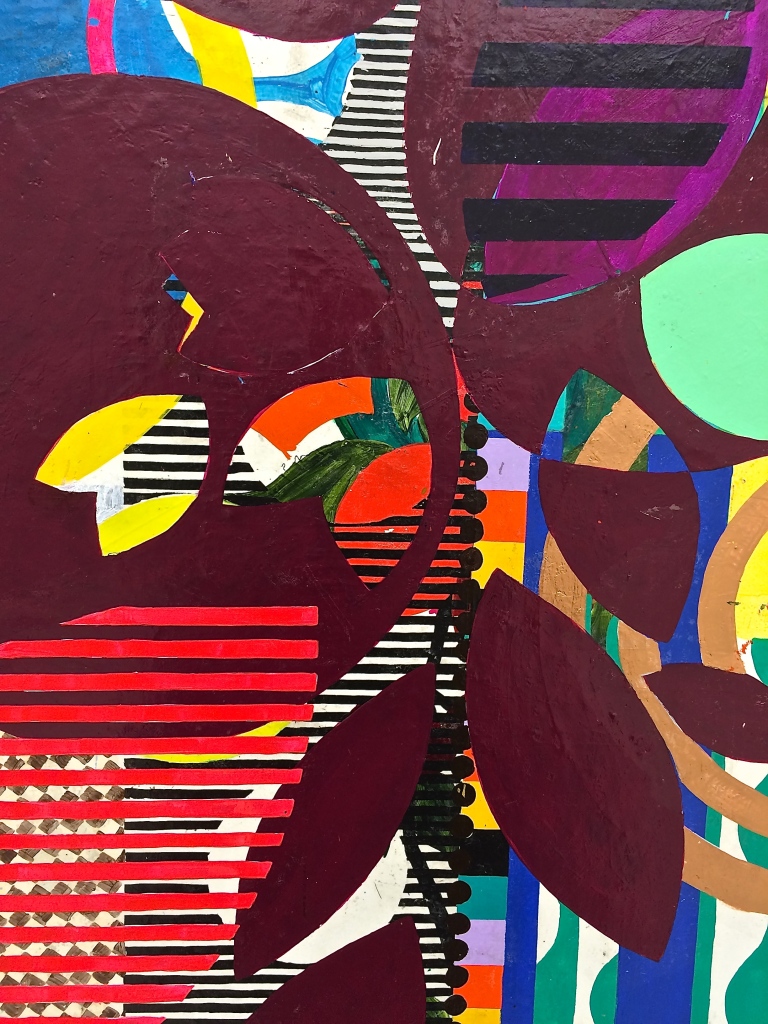
Can you elaborate on some of these motifs?
In my recent works I used abstract art as a reference and motif and element to the construction of the work. In this show you can see a dialogue between the leaves- botanical motifs of flowers and trees- sharing the space with more geometric elements.
I use imagery from applied, decorative or primitive art, naïve art, which has always motivated me to work with art, and real nature. I observe real nature. My studio is next to the botanical gardens. As an artist, as a person actually, I need to be close to nature. I was born in Rio de Janeiro, I grew up there and my studio is still there. We have a real nature—ocean, forests … But it’s only in the last 5 or 6 years that I have really absorbed these observations and influences in my work.
Do you have a fixed idea of how you want the work to be, or is the process much more organic?
I always introduce new elements to my work, so I have a group of existing things and motifs and then I introduce some new ones—and they create a change reaction that will open new doors to my work and I move forward with these ideas. So with these collages (in the exhibition) I started working with some preexisting cutouts that I already had in the studio that I’ve been collecting since 2003. I kept things that I didn’t use, so I have archival elements. I started with these elements and then introduced new ones like leaves, and candy wrappers, or graphic papers … Until 2011 I had a collection of candy and chocolate wrappers, so for many years my collages would incorporate these papers. Screen printed papers, a big mix of papers.
How do you know when a collage or painting is finished?
It’s difficult to figure out exactly when a work is finished. Sometimes I have work that stays with me a year. It’s not that I am working on it the whole year, but I don’t feel that that it’s finished yet. I would keep it and look at it for one year.
My process is very slow—it’s not just the time the work needs and reflecting on it, but also the time of the technique, which is laborious. The collage is a faster process because they’re paper cut-outs. You have limitations with paper and you can’t push it too far, whereas painting is very open so you yourself are constantly creating and developing. With collages you already have the limit of the cut out paper. That determines and helps you see when something is finished. But, I think overall it’s the colour combination that helps me determine when something is finished. In this one [Turkish Garden, 2014], I start from the background and then I put a trunk in the middle and then start adding magenta leaves. When I added these I then decided it would be a magenta tree and I filled the surface with the magenta leaves.

There are so many different reference points in your work—smatterings of Matisse, abstractism, op pop— but the style is also uniquely yours.
Yes, I have a strong connection with the Brazilian modernism of the ‘30s, especially Tarsila do Amaral, and then Matisse and later on Mondrian. So, from the beginning I had this connection and it was a triangle of influences; they were my company going into the studio.
More recently I started using some abstract symbols. I never copy or make drawings looking at something, because it’s never worked for me when I’ve tried this. So I always prefer to work with imagination, or I have a more spontaneous relationship with the object of interest.
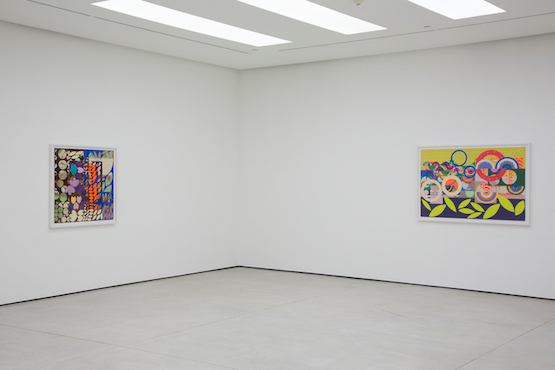
Is there a formula behind your use of colour?
Not really a logical one. I think of myself as an abstract geometric artist. My colour has changed. For many years my work had a more melancholic tone—there was memory and time behind the colours. And then more recently it started to get brighter and brighter. Yellow for example has a strong presence that wasn’t really common in my early 2000s work. I wouldn’t say its just intuitive, but there’s no formula. I would like to have one, but its very complicated working with colours. I’ve been working with colour for 30 years but there’s always something new, even when you think you know it all. You put a pink here and it works on one painting, but it can destroy another. Colour is something you can never learn enough about. But that is also the fascination of working with colour. You’re always learning more things about it.
Flowers always interested me, but that came from an interest in the applied arts, not necessarily from looking at nature. Decorative art is something that I’m really interested in. I like this human touch and human expression that is very intimate. It’s not something we need for use, but we need for wellbeing, for the soul.
Gallerist James Cohan has described the imagery in your work as “defiant feminism”, and your work is often positioned in terms of your gender, in the context of you being a female artist. How do you feel about being positioned first and foremost as a female artist and your work being seen as feminist simply because of your gender?
I never really thought as my gender as a theme or inspiration for my work, or even in a political context. But I can see how some elements in my work are very female, or belong to the female world, like my interest in the handmade costumes, and fashion, which also inspires me. They are seen as coming from a female world, and I do use them as motivation in my work. The fact is painting is a very male world. From South America to become an international artist became a political statement in itself. I’m a woman! Of course the way I look at things is probably a woman’s way of looking at things. It’s okay if that’s how they position me. What needs to happen is for people to see that women are also intelligent and can introduce and contribute things to art history, that we can also drive things forward in terms of meaning. The way they connected my work with female gender is the very obvious, but it’s not the rationality that drives my work.
Have you come across challenges being a female artist?
In Brazil our art history has respected a lot female artists; we have a lot of women in art history. I grew up in this kind of environment where painting wasn’t an exclusively male activity. But when I started in New York in the early 90s, I suddenly noticed that things were different. I started to understand why feminism developed and started in the US, because it’s a real thing! Painting was male work, and women were put in a different box. To get out of that box was a fight. To me this was surprising; I wasn’t expecting it. I felt like I needed to prove that I was serious when I entered the international field. I feel that this still hasn’t changed. The number of women who get to the top are few, and the prices are also very different between male art work and female art work—it’s lower for women. It’s unbelievable if you think about it.
You’ve claimed a space for yourself in the international art market using techniques and influences borrowed from decorative and craft arts, which have traditionally been disparaged in the art market and perceived as low brow. You’ve repositioned it in hi-art.
Yeah, this is an interesting point. [Laughs] Robert Storr once visited me in the studio and said exactly this; “As a woman you pretend to be a painter, using all pejorative, low culture elements and now you’re on the cover of ArtNow”. Yes, I’m shifting low art into high art.

Your work has shifted recently from more floral compositions for which you were known to more abstract geometric ones.
I think the geometry was always there. I always felt like a geometric artist, but now the abstraction has become clearer and has become the point of observation, that’s true. It’s evolved in this direction.
A few of the works, Cake Landscape (2014) in particular have an almost Bridget Riley feel to them. The lines seem to throb and move. Or is that just my hangover?
[Laughs] Yes, the circle became the most important geometric shape I use. It’s disturbing. There’s no centre and it makes your eyes move. Bridget Riley was always an influence but now I look at her optical works as a reference in the paintings; before it was the concept of the optical but now it’s physically there.
Are you working on any other projects at the moment that you can tell us about?
I’ve been doing different museum shows. This January I just closed my first US museum show. Next I will have a show in New York at James Cohan Gallery. And I’m doing a project with the Jewish Museum in New York too. They will have a retrospective of (Roberto) Burle-Marx, a Brazilian landscape architect, drawer, and painter. The Jewish museum is developing a retrospective of his work and they wanted me to do a piece for the entrance. Burle-Max was always a reference for my work.



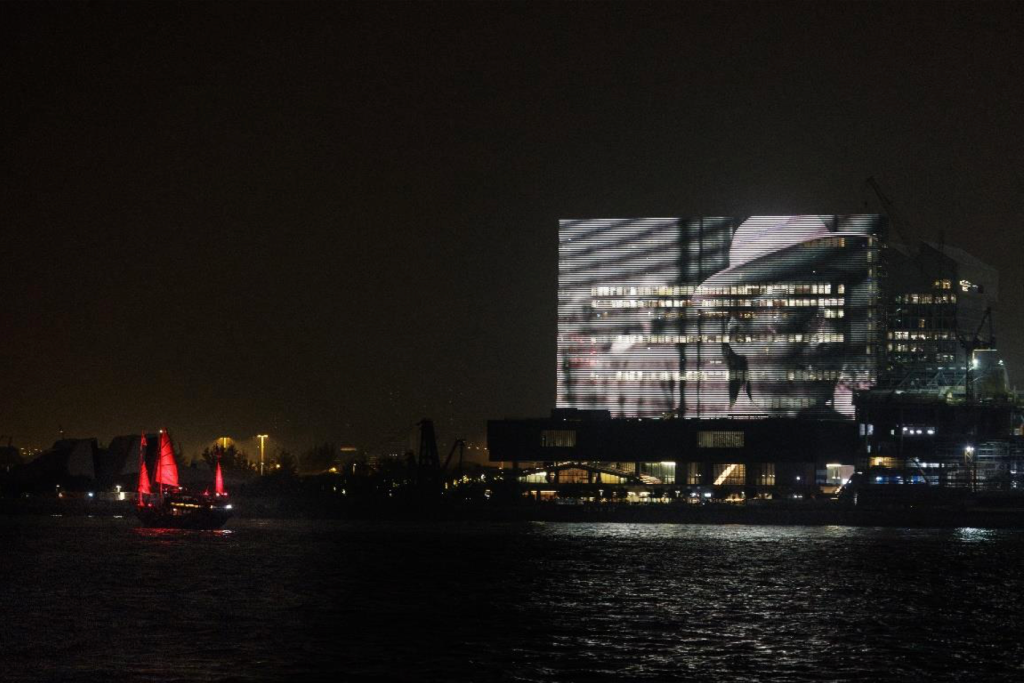
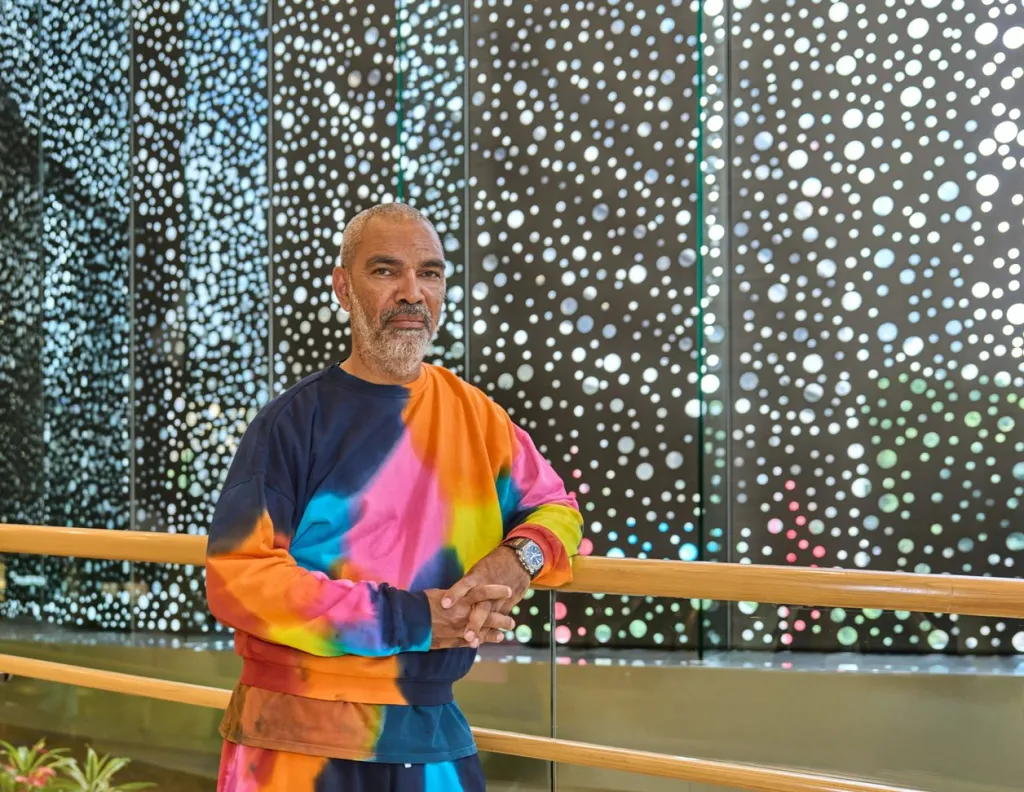
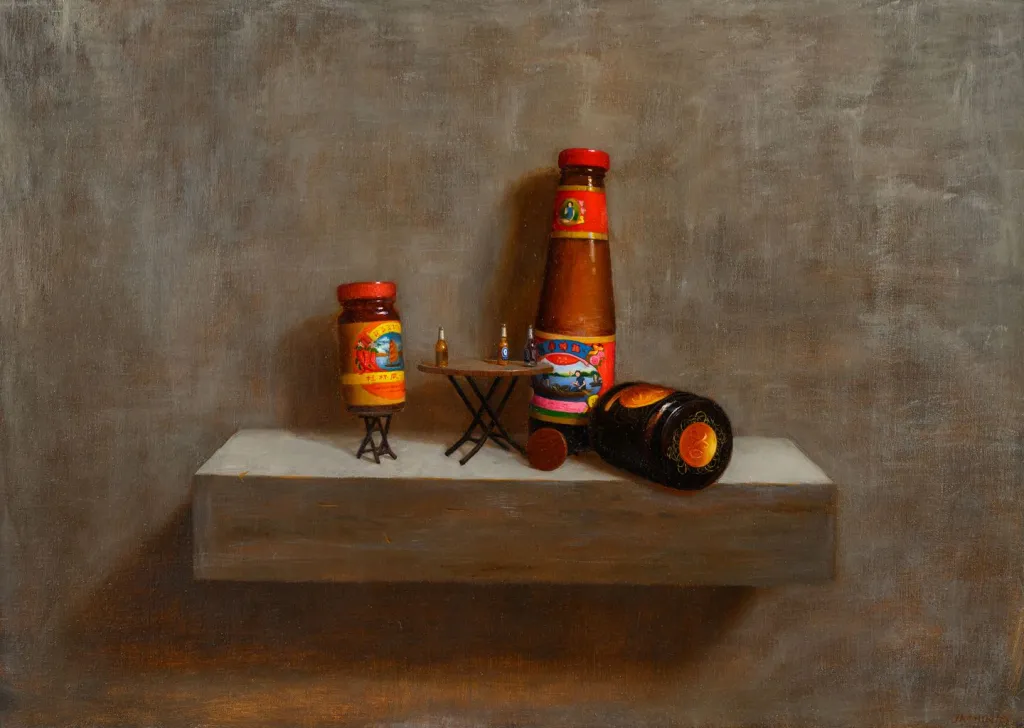
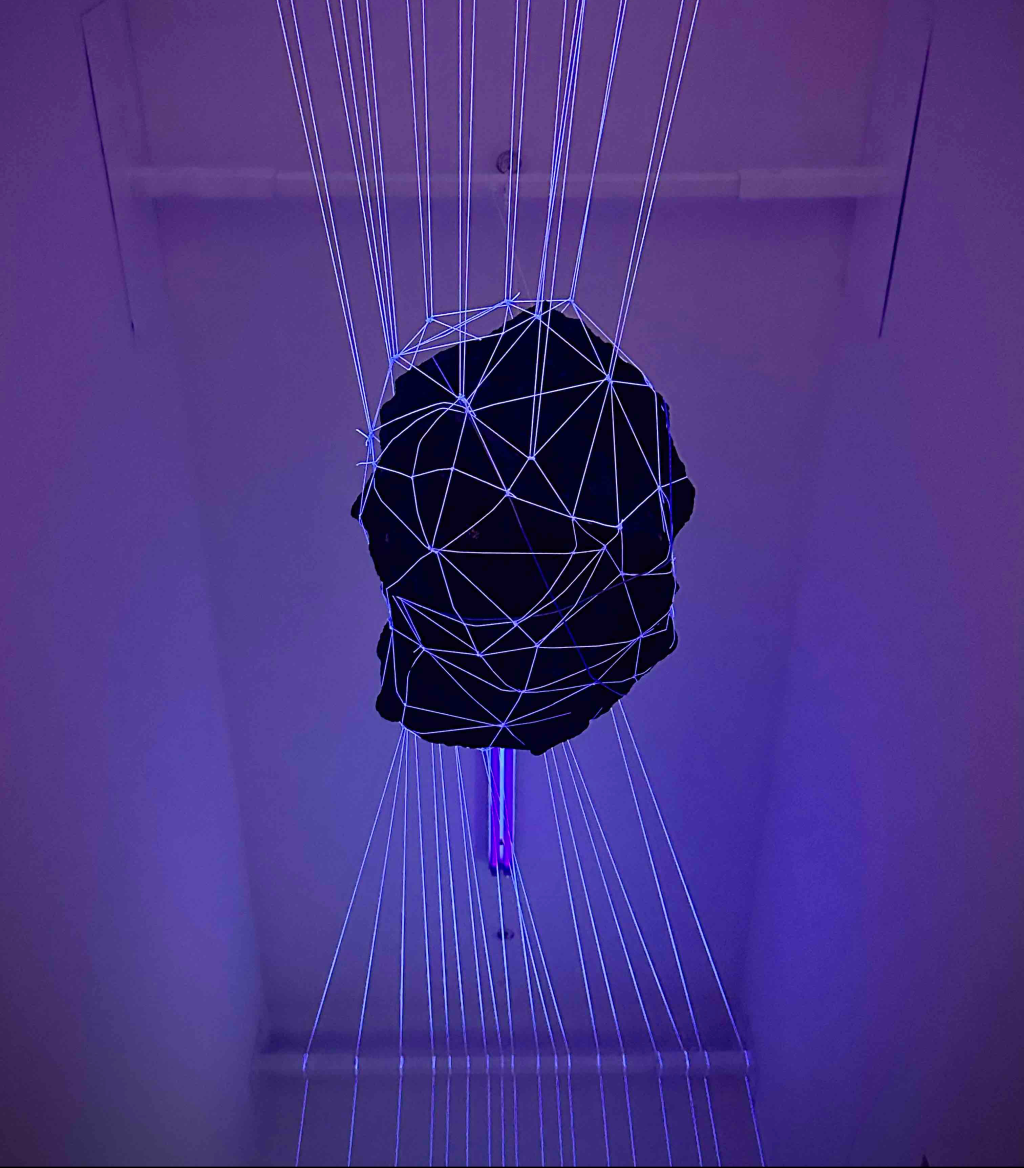
Leave a comment